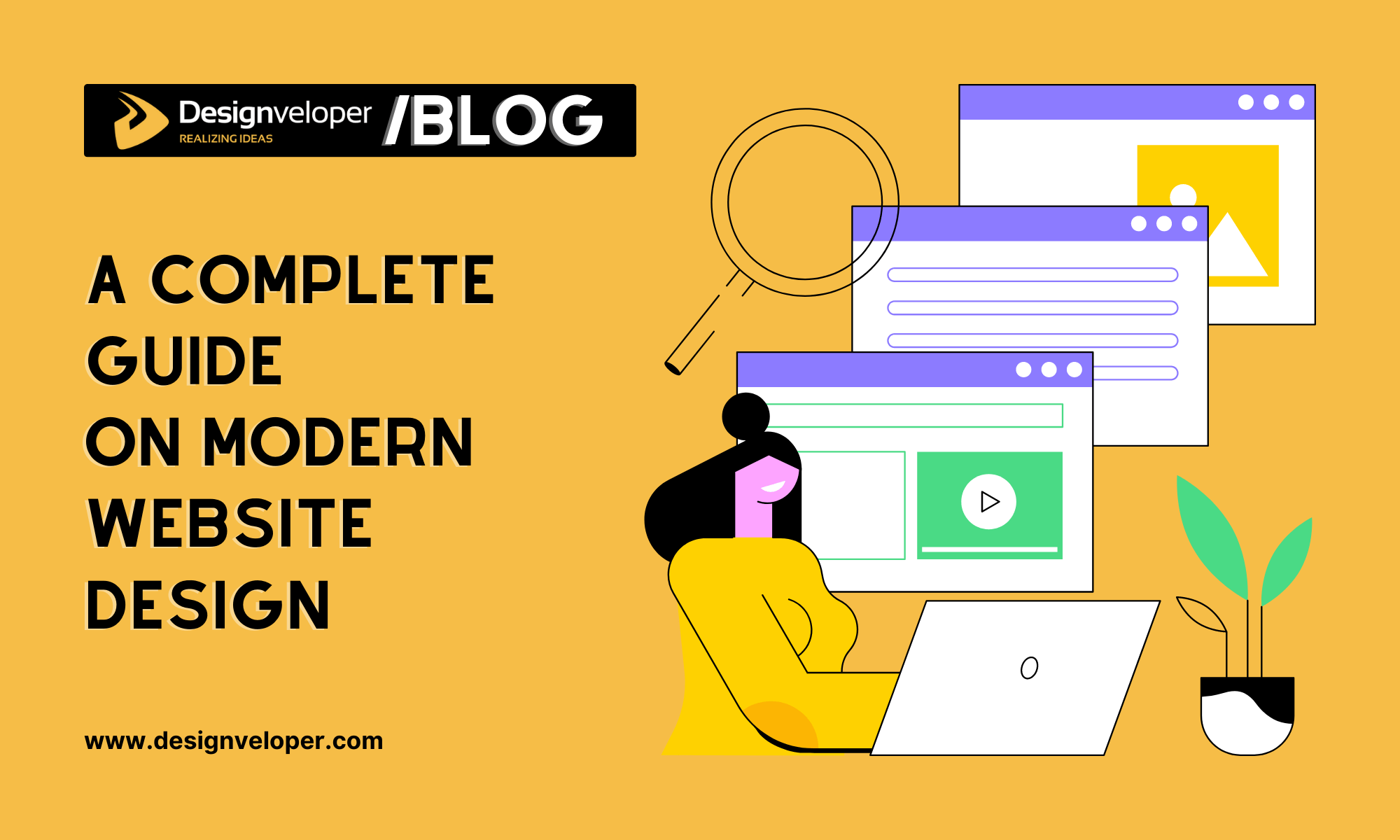Why Website Design Matters for Building a Strong Online Brand
Why Website Design Matters for Building a Strong Online Brand
Blog Article
Modern Website Design That Catches Interest and Transforms
In an increasingly electronic landscape, modern-day internet site layout has actually arised as a crucial variable in catching individual attention and driving conversions. By strategically employing aesthetic power structure, responsive designs, and involving interactive aspects, designers can develop experiences that not just draw in site visitors yet also assist in significant communications. Reliable call-to-action approaches play an essential duty in assisting customers towards desired end results. As we explore these necessary elements, it comes to be clear that recognizing their interaction can significantly impact a web site's efficiency and user contentment. What are the crucial elements that really make a distinction?
Value of Visual Power Structure
Visual power structure is an important component in internet site design, as it guides customers' attention and enhances their total experience. By strategically organizing content, designers can route customers to the most important details initially, thus enhancing engagement and boosting functionality. Effective aesthetic power structure uses numerous methods, including size, contrast, color, and spacing. Bigger components naturally attract the eye, while contrasting shades can stress essential messages, making them stand out amongst even more subdued parts.
Integrating a sensible circulation in material arrangement is essential; for instance, putting the most vital details at the top of a page fosters instant recognition. Moreover, constant use typography, such as varying font sizes and designs, helps develop a clear material structure. This company not just aids in navigating yet likewise develops depend on, as individuals really feel much more comfy when they can quickly discover what they are trying to find.
Ultimately, a well-executed aesthetic hierarchy not only improves aesthetic allure yet also considerably affects customer habits. By prioritizing important aspects and guaranteeing a smooth experience, developers can properly convert site visitors into clients, enhancing the importance of this foundational layout principle in modern-day site advancement.
Responsive Design for All Devices
Developing a seamless experience across various devices is necessary in today's electronic landscape, where individuals accessibility web sites from tablet computers, desktops, and smartphones alike. Responsive layout is a critical method that guarantees sites adjust fluidly to various display dimensions, resolutions, and orientations. By utilizing flexible grids, pictures, and CSS media questions, developers can create designs that maintain aesthetic honesty and performance, despite the tool being used.
The importance of receptive design prolongs beyond aesthetic appeals; it directly impacts individual involvement and conversion prices. A web site that functions well on all gadgets encourages longer brows through and minimizes bounce prices, as users are most likely to communicate with web content that is easy to browse. Search engines, particularly Google, focus on mobile-friendly websites in their rankings, making receptive design a vital part of search engine optimization (SEARCH ENGINE OPTIMIZATION)
Incorporating receptive style not just improves individual experience yet additionally simplifies the advancement process. By developing a solitary site that functions across tools, companies can conserve time and sources compared to creating separate mobile and desktop versions. Inevitably, responsive layout is an essential strategy for modern-day internet site layout, making certain access and satisfaction for all individuals, despite their gadget.
Engaging Interactive Elements
While a responsive style lays the foundation for a useful internet site, including interesting interactive components is essential for catching user interest and promoting much deeper links. Website Design. Interactive aspects, such as computer animations, tests, and clickable infographics, produce a more vibrant individual experience, motivating visitors to invest even more time on the website
Integrating interactive functions can additionally guide customers via facility details, making it less complicated to digest web content. For instance, interactive sliders can highlight item variations, while embedded videos can provide demos or reviews that resonate greater than static images or text. In addition, gamification methods, like rewards for engaging or completing jobs with material, can improve user motivation and retention.
Reliable usage of interactive elements not only enriches the individual experience yet can likewise lead to greater conversion rates. It is crucial to stabilize interactivity with performance; excessively intricate attributes may hinder website rate, negatively impacting individual complete satisfaction.
Streamlined Navigation Practices
Efficient navigation is a foundation of any kind of effective site, as it directly affects user experience and material accessibility. Structured navigating practices ensure that individuals can quickly locate details, improving their communication with the website. A well-structured navigation menu need to be basic and user-friendly, typically featuring a limited variety of primary classifications to prevent frustrating site visitors.
To attain streamlined navigating, designers ought to prioritize a hierarchical framework that rationally arranges web content. Applying breadcrumb trails can give customers with context about their current area within the website, allowing for seamless backtracking. Furthermore, using drop-down food selections can effectively preserve room while still giving access to subcategories.
Receptive layout is vital, as navigation must be practical across all devices (Website Design). Mobile users, in particular, take advantage of touch-friendly food selections and collapsible areas that preserve use without endangering appearances

Reliable Call-to-Action Strategies
A well-crafted call-to-action (CTA) is crucial for directing individuals towards preferred results on a web site, as it urges them to involve with content or buy. To maximize their effectiveness, CTAs need to be clear, compelling, and strategically positioned throughout the website.
First, utilize action-oriented language that interacts seriousness or worth, such as "Begin," "Sign up with Now," or "Case blog Your Discount rate." This language not only inspires individuals but also sets clear assumptions regarding the next steps.
Second, think about layout components; CTAs must stand apart aesthetically via contrasting colors, ample whitespace, and noticeable positioning. A button that is simple to see and click rises the possibility of individual communication.
In addition, personalizing CTAs based on individual actions or demographics can substantially enhance interaction. Customized messages resonate much more with users, driving greater conversion rates.

Final Thought
Finally, modern internet site layout highlights the assimilation of visual power structure, receptive layouts, engaging interactive elements, structured navigating, and efficient call-to-action techniques. These components collectively improve individual experience, ensuring that visitors stay engaged and inspired to discover content additionally. By prioritizing these design principles, companies can considerably boost user retention and conversion prices, eventually bring about higher success in the digital landscape. The continuous development of website design highlights its essential role in effective online communication and advertising.
In an increasingly digital landscape, contemporary site design has imp source actually arised as a crucial factor in catching customer attention and driving conversions.Visual power structure is a crucial aspect in website layout, as it overviews customers' interest and improves their general experience.The value of receptive style expands beyond aesthetics; it directly affects user involvement and conversion rates.Including receptive style not only improves user experience however additionally simplifies the development process. Inevitably, responsive style is an essential technique for modern-day site layout, guaranteeing ease of access and contentment for all users, no matter of their device.
Report this page